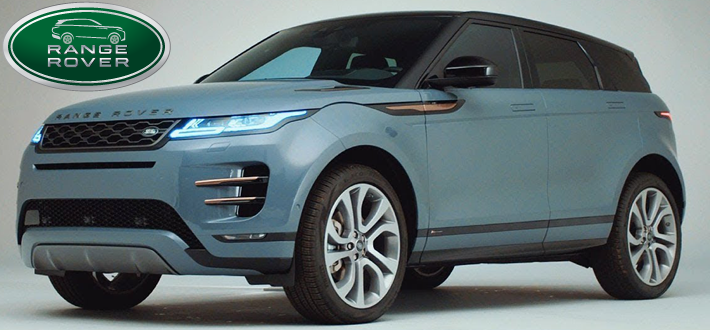
Land Rover has launched the second generation Evoque after teasing the SUV on the streets of London. The latest generation land rover Evoque comes 8 years after the first generation debuted back in 2010. So, let’s correlate the latest Range Rover Evoque with its ancestors and find out what all has changed.
Sizes Of New Vs Old Range Rover Evoque
At 4,371mm X 1,996mm X 1,649mm, the modern Range Rover Evoque is 11mm longer, 6mm wider and 14mm bigger than its old version. The wheelbase has also gone up by 21mm and currently available at 2681mm. This modification in dimensions doesn’t mean that the new Evoque is more efficient than the old one, at least on paper. It has a low approach, departure and breakover angle contrast to its old model. But, the water wading depth has gone up by 100mm.
Range Rover Evoque Design
The second generation Range Rover Evoque acquired several design cues from the larger Range Rover Velar, thanks to which it displays less bulky than its old version. Like the Range Rover Velar, the new Range Rover Evoque gets horizontally developed twin-pod LED headlamps. The front display grille is also new, but it’s not as big as the Velar’s. The modern bumper specs a central air dam, like before, and side air dams with horizontal slats, unlike the extrovert model which had pentagonal side air dams and a sleeker central air dam.
On The other side, the overall silhouette with the sloping roofline and the flared wheel arches do remind us of its previous models but the pop-out door controls are similar to the Velar.
At the back, its specs are sleek twin-pod tail lamps (like the Velar), rather than single-pod units of the predecessor. These also significantly increased the width of the new Range Rover Evoque.
Range Rover Interior design and other Features
The cabin design of the new Range Rover Evoque appears less cluttered than its ancestors, specifically when you factor in the controls on the central dashboard between the front seats. The interior design also looks modern and unique thanks to the touch controls on the steering wheel and digital instrument clutch, which are not present on the first generation Range Rover Evoque. The latest Evoque also features JLR Group’s Touch Pro Duo infotainment system that consists of dual screens: one 10-inch unit for infotainment that sits on the dashboard and supports Apple CarPlay, while the second unit holds controls for other onboard specs like climate control, ventilated seats and terrain management system. Like the exterior design, there’s influence from the Range Rover Velar on the inside as well.
The latest Evoque debuts Land Rover’s transparent bonnet idea which was viewed into the Discovery Vision concept. It uses cameras in the front grille and on the door mirrors to project a feed onto the central touchscreen that shows what is ahead of and underneath the front of the Evoque with a virtual 180-degree view. Land Rover claims it allows good visibility when negotiating extreme terrains as well as high kerbs (speed breakers).
Then there’s the ‘ClearSight Rear View’ tech. In this, with the touch of a button the interior rearview mirror displays feed from the camera mounted above the rear window, providing an unobstructed 50-degree view of the cars coming from the back, just in case you’re carrying a big object that obstructs rear vision. None of these features were a part of the Evoque’s equipment list before.
Previous vs new Range Rover Evoque Engine
The first range rover evoque manufactured by India, Evoque gets a 2.0-litre 240PS/340Nm petrol engine and a 2.0-litre 180PS/430Nm diesel engine. Both engines are the same as a 9-speed automatic gearbox.
Similarly, the latest Range Rover Evoque is also mechanized by the Ingenium family of petrol and diesel engines. In the UK, where it has been launched, it is mechanized by the 2.0-litre diesel engine that is offered in 150PS, 180PS and 240PS power outputs with automatic transmission and mild-hybrid technology. It can also be had with a manual transmission but it is limited to the 150PS repetition only.
In the petrol engine, the range rover Evoque gets a 2.0-litre engine with an automatic transmission only with three power production: 200PS, 250PS and 300PS. The petrol Range rover Evoque engine is available with mild-hybrid tech as standard.

